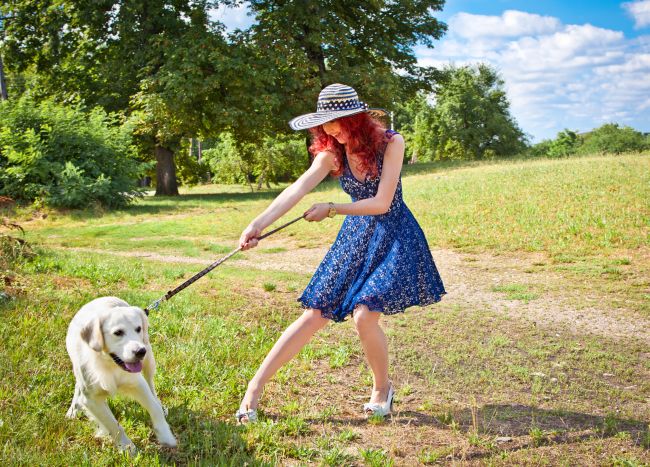
Is your arm sore from yanking your lunging Labrador back with the leash? Many pet parents experience great frustration and dread when it comes to taking their pooch out for the daily stroll. Dog-heeling training can be exhausting when you compile house breaking, obedience and skill training and crate training all at the same time. The first few months of pet ownership can be challenging when even something as simple as taking a walk is literally an uphill battle. Learn some classic tricks of the trade on how to nip the leash-tugging in the bud. Here are our tips on how to train your dog to heel:
Teaching Your Dog To Heel
- First: Adjust your expectations: This is an important preliminary step. If you are just trying to squeeze in a quick 30-minute routine so you can hit the gym before dinner, you may have to change your expectations. If you are dedicated to breaking bad habits, it will take time and energy to work with your dog. One or two walks will not achieve the results you want, so be prepared to focus on practicing correct walking etiquette so he will have the manners he should.
- Choose the right leash: One of the reasons you might be having difficulties with your puppy pal, is if you are using the wrong kind of leash. While training, extension leashes tend to allow dogs free reign to roam at will, which is counterproductive. Harnesses might help your dog curb the instinct to pull, but they only solve the problem because of restraint rather than genuinely correcting the habit. Find the leash that will best help you teach your dog how to heel, whether the leash is present or not.
- Change your method: If your walking patterns have not proven successful in the past, it is time to implement several steps to help your dog learn how to walk obediently.
- Stop yanking and pulling: If your dog successfully gets you to follow him whenever he pulls ahead, he will continue to do so. Instead, anchor yourself and refuse to move forward until the leash is loose and the dog is waiting patiently. (If your pup overpowers you by size, you may need someone else to help with this stage of the training.)
- Encourage loose-leash walking: When your dog figures out his best chance of progressing forward occurs only when he stops pulling, he will ideally amend his tendency to do so. Be dedicated and keep a steady pace EVERY time the leash is loose, but the second he pulls again –stop until the dog waits for you.
- Reward, or “capture” the good behavior: Dogs generally don’t mean to be naughty; they are usually just enthusiastic when they are finally able to be outside with their favorite person. But sometimes, even the rowdiest walkers will wait patiently by sitting on the curb next to you, or walking alongside you without pulling ahead. “Capturing” involves rewarding this behavior. Whenever your pup does the right thing, bring out a treat or praise them for it to reinforce the positive action.
- Proofing: (Aka, start small then increase the breadth of practice): Proofing means practicing in a familiar place before going out into the world. This might look like putting the leash on and practicing “heeling” around your own yard or in the house. Once your puppy pal gets the drill, take him outside, but only walk the extent of your block. When he has achieved obedience and responded to the changes in how you work together (i.e., NOT racing around or pulling your arm out of socket!) then you will be ready to take longer strolls and trips to the park.
- Have patience: This is key in any form of puppy training, since skills do take time to acquire and solidify. When you take your dog to the park, expect numerous distractions (let’s face it- squirrels always seem to unnerve our canine companions), which may cause your dog to bolt and forget the good lessons he has learned, or send you into a leash-tangle! Don’t lose heart; rather, patiently help guide your pup into the right way to respond to your lead.
Other methods: You can also use a clicker to help your dog associate commands correctly while walking. Alternatively, if life is just too demanding, but you want your dog to practice good habits, then consider hiring a professional dog walker who would be willing to train them in proper decorum.

